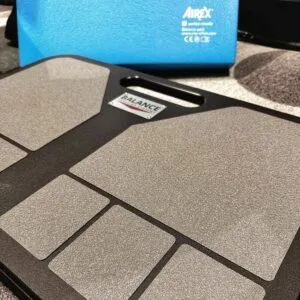
Finding Your Feet Again: Understanding Posturography and Concussion Recovery in Dalby
Have you ever considered how vital your vision is to your balance? Following a concussion or head trauma, it’s common for individuals to experience dizziness, unsteadiness, and difficulties with everyday tasks. While these symptoms might seem purely neurological, your visual system plays a crucial role in maintaining your equilibrium. At Eyecare Eyewear Dalby, we’re equipped with advanced tools like posturography to objectively assess and help manage these challenges.
So, What Exactly is Posturography?
Simply put, posturography is a sophisticated way to measure your balance and posture. It typically involves standing on a specialized platform (a force plate) that can detect and quantify subtle shifts in your body’s sway. During the assessment, we might adjust visual inputs (e.g., closing your eyes, or using a moving visual field) to understand how different sensory systems – particularly your vision, inner ear (vestibular system), and proprioception (body’s sense of position) – contribute to your stability.
The Vision-Balance Connection After Head Trauma
When a concussion or head trauma occurs, it can disrupt the complex pathways connecting your eyes, brain, and balance system. This can lead to:
- Visual-vestibular mismatch (your eyes and inner ear sending conflicting signals).
- Difficulty processing visual information quickly.
- Reduced visual acuity or depth perception.
These issues directly impact your ability to maintain stable posture and move confidently, often leading to ongoing dizziness, fatigue, and even falls.
How Posturography Guides Concussion Management
For optometric patients in Dalby dealing with post-concussion symptoms, posturography is an invaluable tool. It provides:
- Objective Data: Unlike subjective reports, it gives us quantifiable measures of your balance deficits.
- Targeted Treatment: By identifying specific weaknesses (e.g., if balance significantly worsens without visual input), we can tailor rehabilitation strategies, including specific vision therapy exercises, to address the underlying visual-vestibular issues.
- Progress Tracking: We can track your improvement over time, helping to make informed decisions about safe return-to-learn, return-to-work, or return-to-play activities.
At Eyecare Eyewear, we leverage posturography to provide precise, evidence-based care, helping you regain stability and confidence on your path to recovery after a head injury. If you or a loved one are experiencing balance issues after a concussion, contact us today to learn more about how we can help.